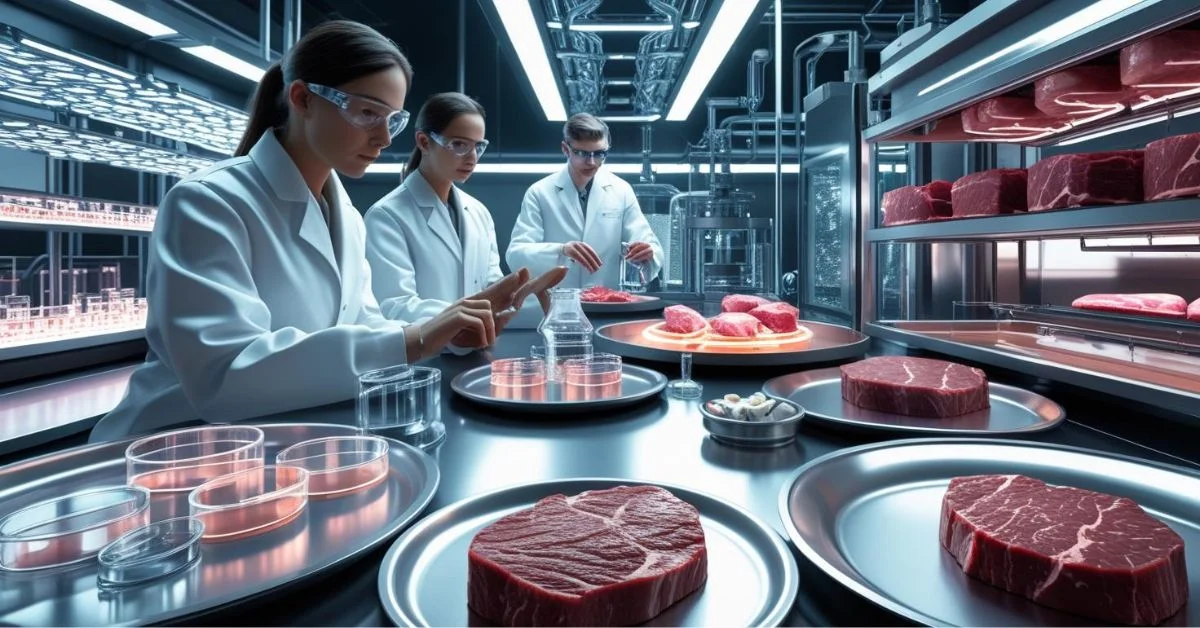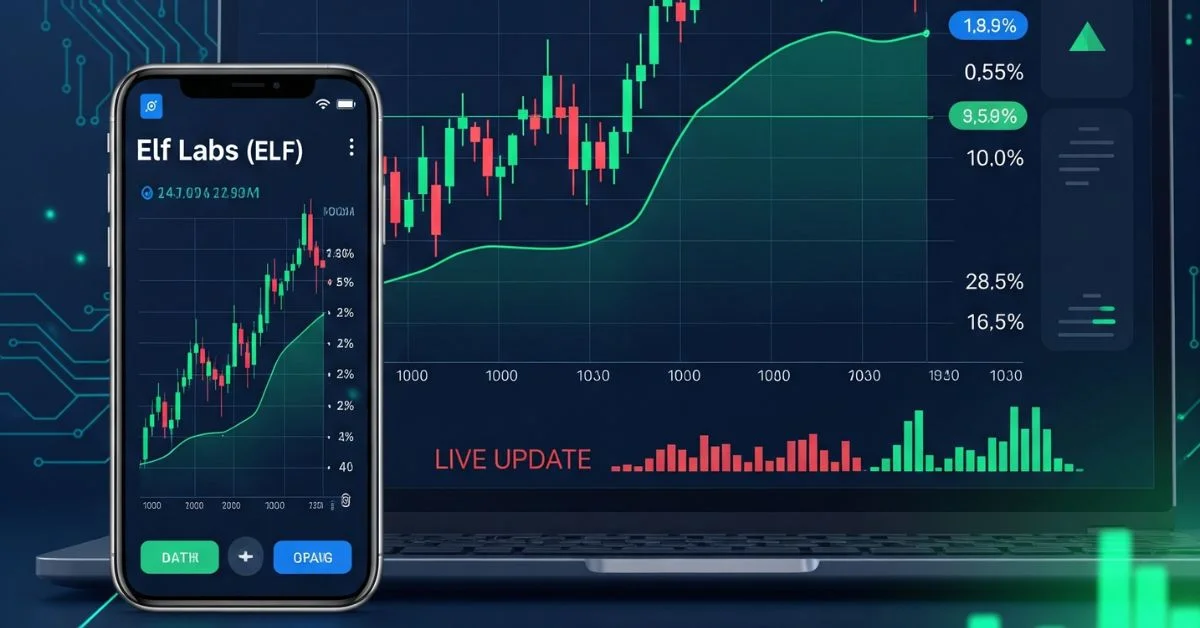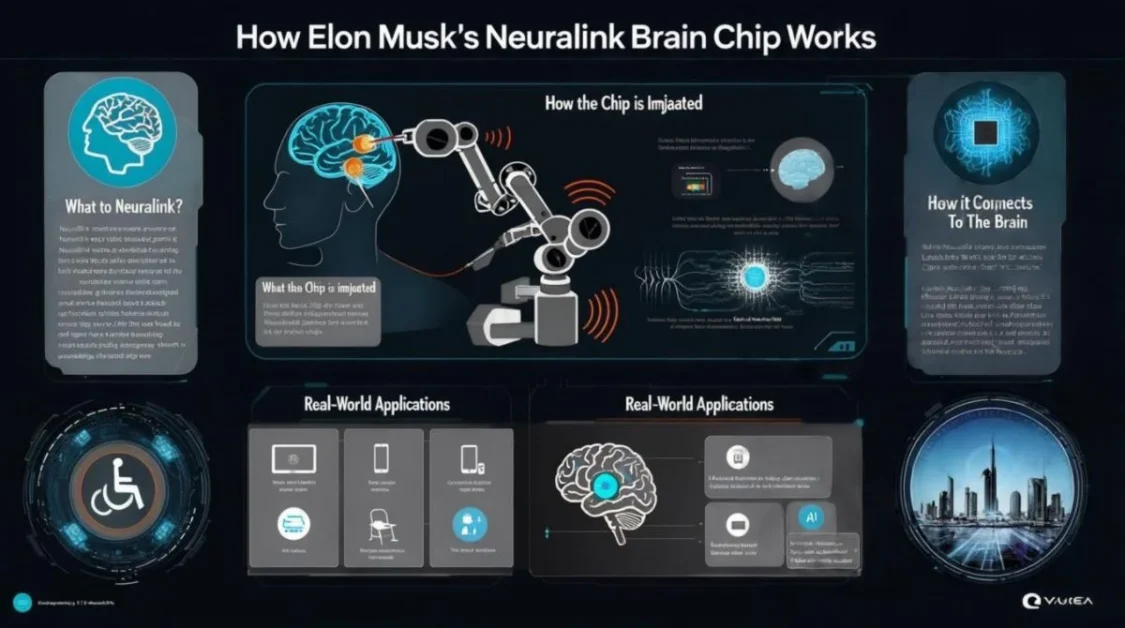A quiet transformation is taking place in the food industry. Lab‑grown meat technology, once a futuristic idea is now a reality that could change what we eat and how we think about food. In 2025, advances in artificial intelligence, innovative bioreactors and life‑like textures are making cultivated meat more appealing, affordable and environmentally friendly.
This isn’t imitation meat. It’s real animal meat, created by growing cells in controlled environments, eliminating the need for raising and slaughtering billions of animals. As the technology matures, it promises a future were enjoying meat no longer comes at the cost of our planet or animal welfare.
What Is Lab‑Grown Meat, really?
Lab‑grown meat, also called cultivated or cell‑based meat, isn’t imitation or plant‑based. This is authentic meat made by nurturing animal cells in well-maintained and tightly supervised facilities.
It starts with a very small sample of cells, gently collected from a healthy animal without causing harm. These cells are nurtured in a bioreactor, a vessel that replicates the warmth, oxygen and nutrition found inside an animal’s body. Over days or weeks, the cells multiply, forming real muscle tissue.
To achieve familiar textures, scientists use scaffolds, edible frameworks that guide the cells as they grow. With 3D bioprinting, they can now create everything from marbled beef steaks to flaky fish fillets, indistinguishable from conventional meat in look and taste.
Why Lab-Grown Meat Tech Matters?
Traditional livestock farming consumes massive amounts of land and water, contributes to deforestation and adds significant greenhouse gases to the atmosphere. At the same time, demand for meat keeps growing worldwide, raising concerns about animal welfare and food security.
Lab-grown meat tech offers solutions:
- Lower environmental impact: Needs far less land and water.
- Improved animal welfare: Fewer animals are bred or slaughtered.
- Stable food supply: Less risk from diseases or weather disruptions.
- Healthier production: No antibiotics, hormones or many pathogens.
It’s a promising path to feed a growing population while protecting natural resources.
Breakthroughs Reshaping 2025
Recent innovations are bringing cultivated meat closer to our plates than ever before.
1. AI-Optimized Growth
Artificial intelligence now controls the entire cultivation process. Smart systems monitor temperature, oxygen and nutrients in real time, improving efficiency, reducing waste and cutting production costs.
2. Next-Generation Bioreactors
Newer bioreactors are larger, more efficient and capable of producing hundreds of kilograms of meat at a time. Better ways of providing nutrients now help keep the meat quality steady while reducing production expenses.
3. 3D Scaffolding for Authentic Texture
Plant-based scaffolds and 3D bioprinting create the familiar textures of beef, chicken and fish. This makes cultivated meat more appealing to consumers who want the taste and feel of traditional meat.
4. Smarter Nutrient Delivery
Innovative systems now mimic blood vessels, delivering oxygen and nutrients deep into growing tissues. This advancement enables thicker and more natural cuts of meat.
5. Faster Production Cycles
Optimized cell lines and growth media can now produce meat in under a week. This not only speeds up production but also helps bring prices closer to traditional meat.
Step by Step: How Cultivated Meat Is Made
- Cell Sampling: A small set of cells is collected from a living animal.
- Cell Cultivation: The collected cells are transferred into a nutrient-filled solution where they can grow and multiply.
- Multiplication: Warmth and oxygen encourage rapid cell division.
- Scaffolding & Shaping: Cells grow on edible frameworks or are shaped via 3D printing.
- Harvesting: The meat is collected once it reaches the desired size.
- Testing: Quality checks ensure safety, nutrition and taste.
This process results in real meat, identical to conventional meat in structure and flavor.
Environmental and Ethical Benefits
Cultivated meat can dramatically reduce the strain on our planet:
- Requires as much as 95% less land and nearly three-quarters less water than conventional farming.
- Emits significantly fewer greenhouse gases.
- Reduces deforestation, preserving natural habitats.
- Improves animal welfare by reducing mass breeding and slaughter.
- Produces cleaner, safer meat with lower contamination risks.
For many advocates, lab-grown meat represents a rare opportunity to create a sustainable and ethical food system.
Economic Impact: Jobs and Industries
The growth of lab-grown meat tech is creating new industries and employment opportunities:
- Biotechnology startups developing growth media and bioreactors.
- Job creation in engineering, research and production facilities.
- Farmers adapting by supplying ingredients for nutrient solutions.
- Global investment, billions of dollars are pouring into cultivated meat ventures.
As production scales and costs drop, cultivated meat could become a key driver of green economic growth.
Shifts in Eating Habits
Cultural acceptance is rising, especially among younger generations:
- Eco-conscious consumers are seeking sustainable, cruelty-free choices.
- Chefs and restaurants are adding cultivated meat to menus as premium, eco-friendly dishes.
- Education and transparency build trust in this technology.
- Taste tests consistently show that many people can’t tell the difference from traditional meat. Over time, cultivated meat could become as common as organic produce.
Key Players in Innovation
Several companies are leading the charge in 2025:
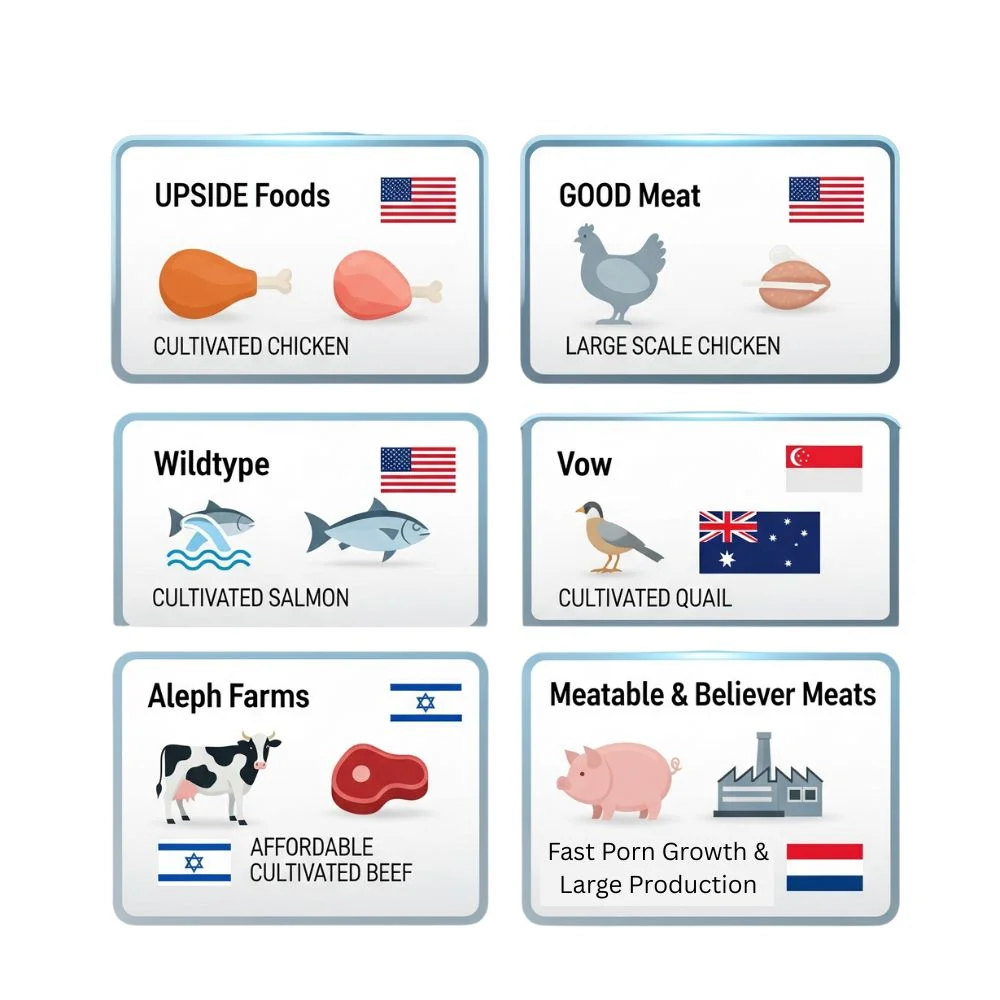
- In the United States, UPSIDE Foods and GOOD Meat rank among the earliest producers of cultivated meat.
- Wildtype: Specializing in cultivated salmon with new approvals.
- Vow: Producing cultivated quail in multiple countries.
- Aleph Farms: Working on cost-competitive cultivated beef.
- Meatable: Known for quick-growing cultivated pork.
- Believer Meats: Running one of the world’s largest cultivated meat facilities.
Their advancements prove that cultivated meat can be scalable, safe and delicious.
Role of Governments and Big Brands
Governments and major food companies are crucial to mainstream adoption:
- Regulatory approvals in Singapore, the U.S. and Australia are paving the way.
- Public funding supports research and helps lower production costs.
- Partnerships between startups and big food brands bring cultivated meat to more markets.
- Global standards for safety and labeling will help expand international trade.
Such collaborations are vital to scaling up production and winning public trust.
Consumer Trust and Perception
Gaining consumer trust remains a challenge. Some people still see lab-grown meat as “unnatural.” Clear labeling, transparency about production and opportunities to taste the product can help build confidence.
As more people understand that cultivated meat is real, safe and sustainable, acceptance is expected to grow rapidly.
Challenges on the Road Ahead
Key hurdles still need to be addressed:
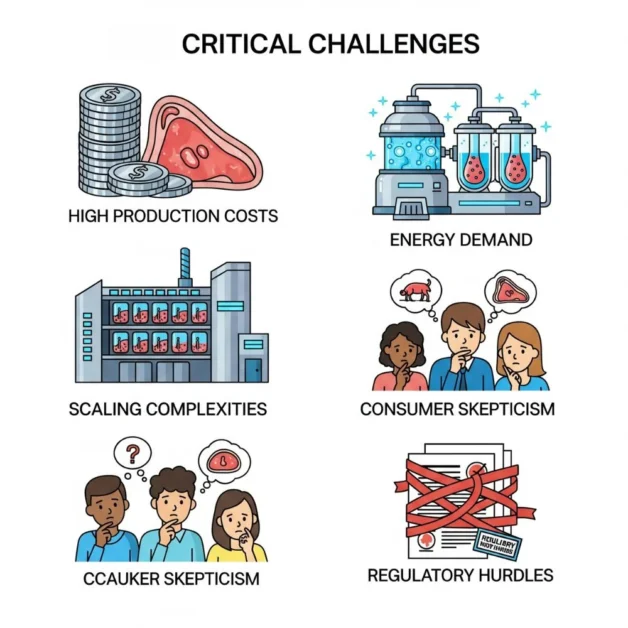
- High production costs: though falling, remain above traditional meat prices.
- Energy demand: scaling production sustainably requires renewable energy.
- Scaling complexities: building large facilities takes time and investment.
- Consumer skepticism: driven by misconceptions about lab-grown food.
- Regulatory hurdles: with some regions banning or restricting sales.
Tackling these hurdles will determine how soon cultivated meat finds its way into everyday markets.
What’s Next for Lab-Grown Meat Tech?
Experts predict the following developments in the near future:
- Falling production costs as technology and scale improve.
- Greater variety of cultivated meats with better flavor and texture.
- Wider consumer acceptance fueled by education and experience.
- Large-scale facilities supplying supermarkets worldwide.
- Integration with green energy, making production even cleaner.
Within the next decade, cultivated meat could become a regular item in grocery stores worldwide.
Why This Technology Matters?
Lab-grown meat tech isn’t just about science; it’s about rethinking how we produce food. It offers:
- Cleaner production with less environmental impact.
- Sustainable solutions for feeding a growing population.
- New opportunities for jobs and innovation.
As costs drop and trust builds, cultivated meat could soon become a standard option in everyday diets.
Real-World Examples and Cultural Shifts
Lab-grown meat is no longer limited to research labs. In Singapore and parts of the U.S., some restaurants have begun offering cultivated chicken, and many diners report a taste and texture similar to traditional meat. Diners often express surprise that the taste and texture match the meat they’re used to.
In the Netherlands, tasting events for cultivated beef attract long waiting lists, showing growing public curiosity. Food festivals in Japan and South Korea are beginning to feature cultivated sushi and dumplings, appealing to adventurous eaters and eco-conscious consumers.
Some cultures with deep culinary traditions are also exploring how lab-grown meat can fit into their cuisines. For example:
- Middle Eastern chefs are experimenting with cultivated lamb for traditional kebabs.
- Italian restaurants are testing lab-grown veal for classic dishes like osso buco.
- High-end eateries in London and New York are using cultivated meat as a premium, sustainable alternative.
Global Outlook: What the Future Holds
Looking ahead, experts expect cultivated meat to become a regular part of the global diet. Large-scale production plants are already under construction in the U.S., Europe and Asia, with the capacity to supply supermarkets within a few years. Governments are starting to include cultivated meat in food security plans, recognizing its potential to provide reliable protein with less environmental impact.
In developing countries, where access to affordable protein remains a challenge, cultivated meat could become a game-changer. Companies are exploring low-cost production methods that use locally available resources, making sustainable protein more accessible worldwide.
In the end, how widely lab-grown meat succeeds will rely on its affordability, flavor and the confidence people have in it. As technology improves and public awareness grows, it’s likely that cultivated meat will move from novelty to normalcy, reshaping what we eat and how we think about food.
FAQs About Lab-Grown Meat Tech
1. Is lab-grown meat real meat?
Yes, it comes from real animal cells grown in controlled environments.
2. Is it safe to eat?
Absolutely, it’s produced under strict hygiene standards and without antibiotics.
3. When will it be widely available?
Experts expect broader availability in 5–10 years as costs drop.
4. Will it replace traditional meat?
Probably not entirely, it’s more likely to complement farm-raised meat.
5. Does it taste the same?
Most taste tests show people can’t tell the difference.
Final Thoughts
The rise of lab-grown meat technology in 2025 signals a major shift in how our food is produced. With smarter systems, improved textures and growing consumer interest, cultivated meat is moving closer to everyday dining tables.
Challenges remain, costs must fall, production must scale, and trust must grow, but the momentum is undeniable. Soon, eating meat may no longer require harming animals or the planet, opening the door to a more sustainable future.
